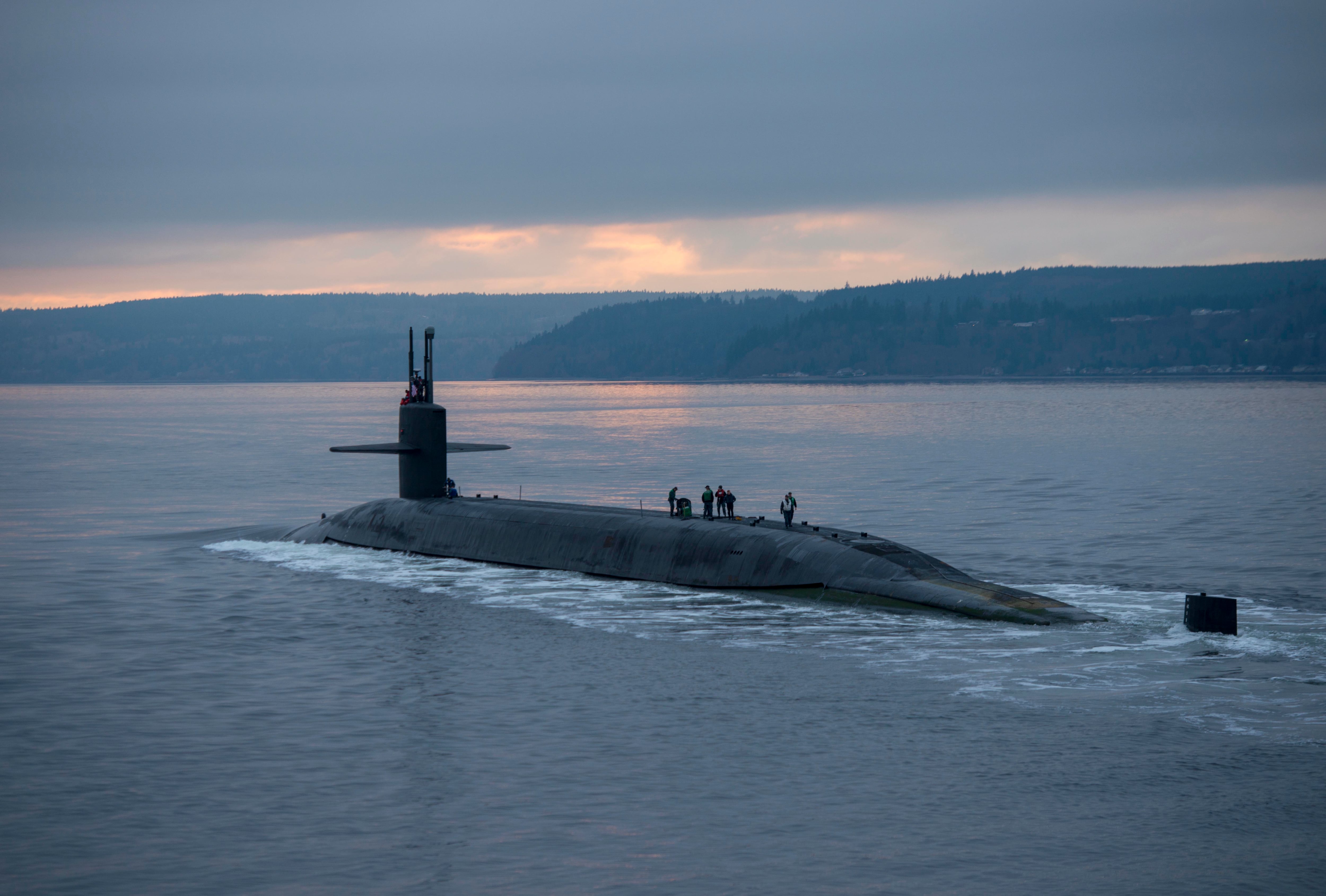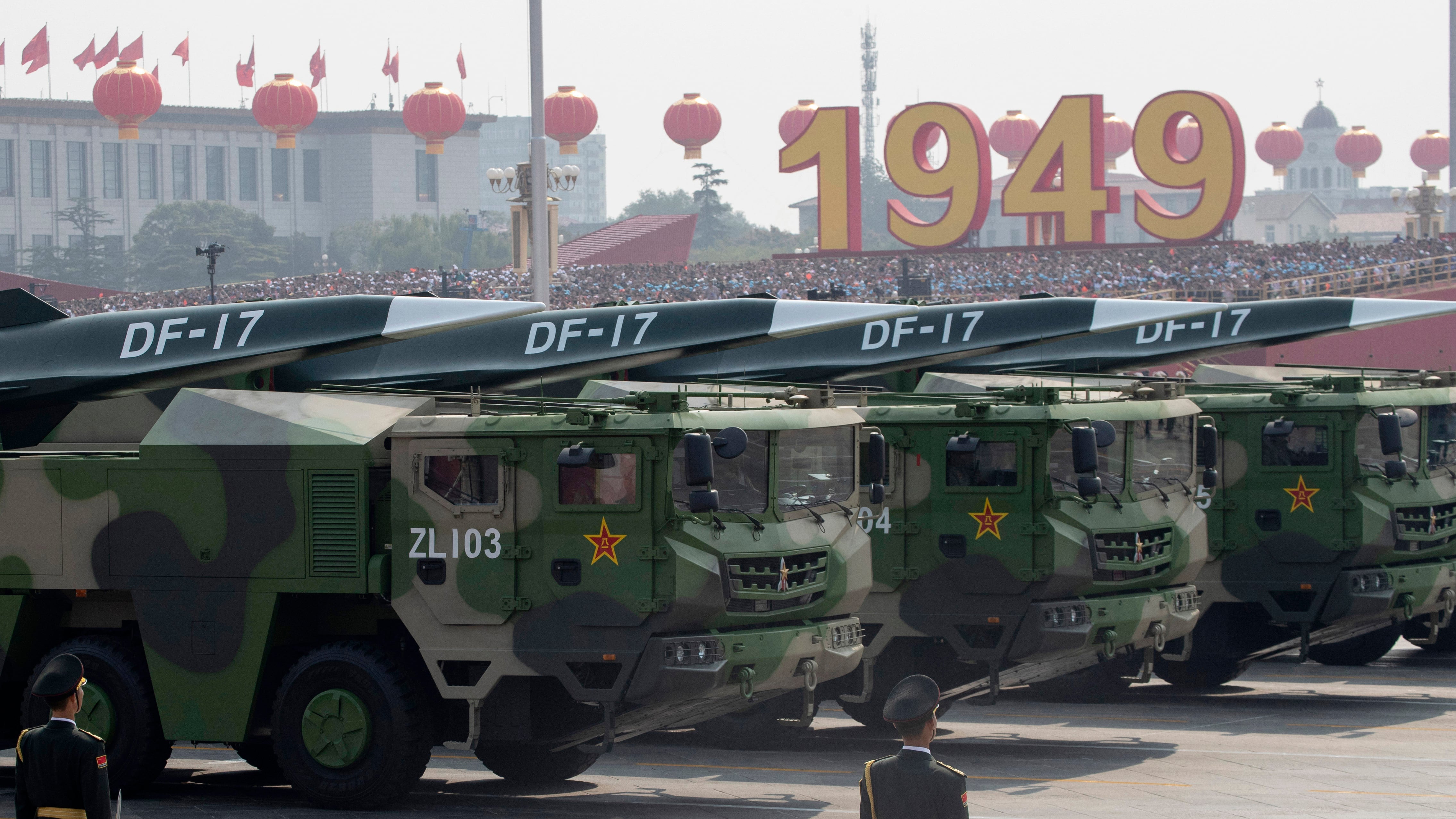WASHINGTON — In the last six months, U.S. Strategic Command has begun performing daily analysis on the state of nuclear deterrence in each of the regional combatant commands, STRATCOM commander Adm. Charles Richard said Thursday.
Richard described the “risk of strategic deterrence failure” effort as a “new type of analysis” that allows STRATCOM to present, on a day-by-day basis, “a formal estimate of the risks that deterrence is going to fail” around the globe.
“I acknowledge this is an analytic process getting after something that is fundamentally subjective,” Richard said at an event hosted by the Mitchell Institute. “But the assertion here is, this risk carries so much consequence that I need to be able to describe to the [defense] secretary and the chairman [of the Joint Chiefs of Staff] at all times, under all conditions, what risks we’re taking with regard to deterrence failing, and then inside that, nuclear deterrence failing.”
RELATED

The new analysis pulls in information from the Joint Staff and other combatant commands. Richard said the threat of deterrence failure is “currently low.”
“We have some great formal mechanisms with all the combatant commands to pull in what they see and what they’re doing, put it into my best possible emulation of the other guy’s decision calculus, and then be able to provide the department: ‘All right, here’s where we sit. Here’s the risk, here’s the margin,’ ” Richard explained.
Retired Air Force Lt. Gen. David Deptula, who leads the Mitchell Institute, said the day-to-day assessment design described by Richard is “unique” and could have great value.
“He is applying an outcome-oriented assessment to strategic deterrence that may have been implied in the past, but he is making a concerted effort to identify the impact of strategic deterrence in a much more qualitative and quantitative fashion,” Deptula said.
“ ‘Deterrence’ is challenging to quantify, but by committing to assessing the impact of deterrent effects,” Richard is creating a more deliberate process, Deptula added. “I really think he is establishing a process of how to best determine the impact of actions that STRATCOM is taking in the decisions that it is making.”
Richard also stressed that defining deterrence in 2020 can be difficult, noting that “strategic deterrence is more than just nuclear deterrence, particularly now, today. It is non-kinetic space, cyber; it is your conventional piece of this.”
“All of this has to be integrated together. It’s not just a STRATCOM job, it is all combatant commands. And we have to be able to rethink the way we do business,” he said. “We’re going to have to change the way we think about deterrence.”
One of the commands providing daily input is U.S. Space Command, which, until its creation as a standalone command, fell under STRATCOM’s purview.
Richard described the relationship between the two as “closely coupled,” noting that SPACECOM still has a major role in ensuring nuclear command and control, and that STRATCOM continues to handle some bureaucratic functions for the newest command.
Aaron Mehta was deputy editor and senior Pentagon correspondent for Defense News, covering policy, strategy and acquisition at the highest levels of the Defense Department and its international partners.




